Purple Shamrock Plant (Oxalis Violacea) Care And Growing Guide
Written by Ivy
Dec 01 2021
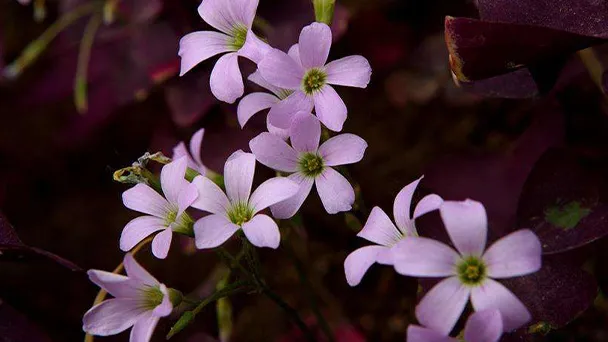
Purple Shamrock Plant (Oxalis Violacea) is a perennial bulbous plant. Its plants are relatively short and can only grow to more than 20 cm high. The leaves of purple Shamrock plant grow directly from the bottom of the rhizome. The leaves are long and strong, and the leaves are like triangular purple butterflies. The purple Shamrock plant is well taken care of. It doesn't need to be taken care of often. On the contrary, frequent watering will lead to the root rot of the purple Shamrock plant.
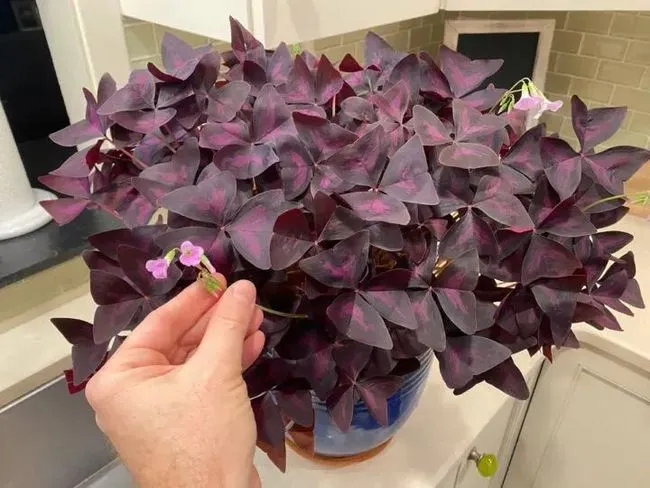 Purple Shamrock plant itself is a warm flower with poor tolerance to high and low temperature. The most suitable growth temperature is about 18 ℃, which is also the best temperature for seed germination and growth. Therefore, it is best to plant purple Shamrock plant in spring, especially in March. During this period, the temperature basically tends to be stable and the light is relatively mild, which is very conducive to the germination of purple Shamrock plant seeds, and after germination, it will grow better under appropriate natural conditions.
Purple Shamrock plant itself is a warm flower with poor tolerance to high and low temperature. The most suitable growth temperature is about 18 ℃, which is also the best temperature for seed germination and growth. Therefore, it is best to plant purple Shamrock plant in spring, especially in March. During this period, the temperature basically tends to be stable and the light is relatively mild, which is very conducive to the germination of purple Shamrock plant seeds, and after germination, it will grow better under appropriate natural conditions.
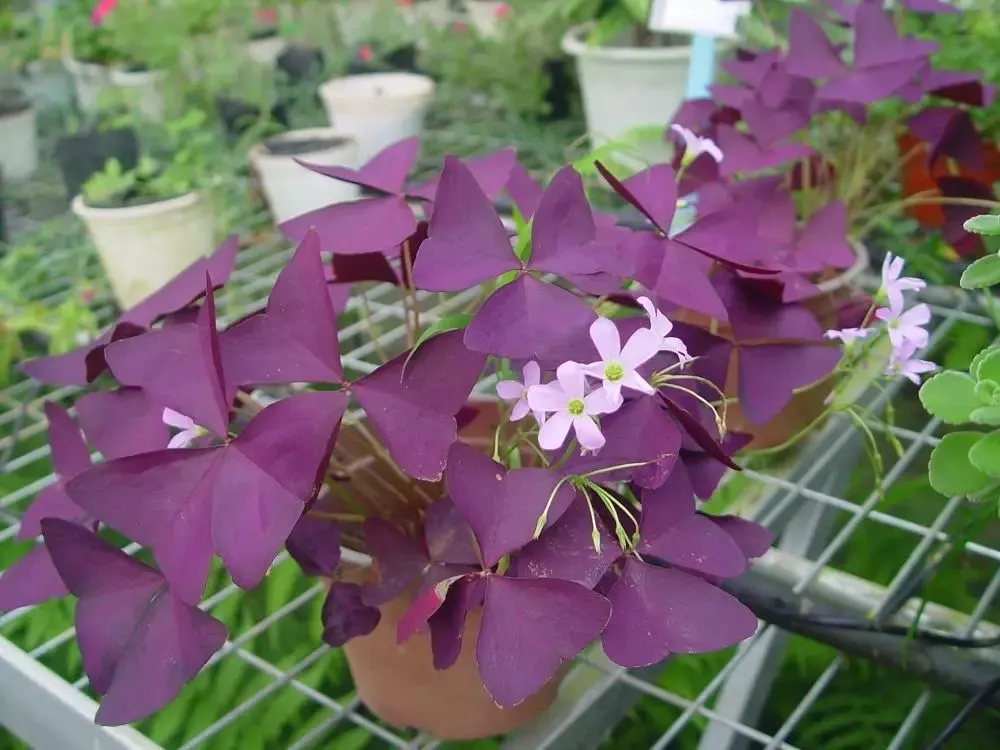
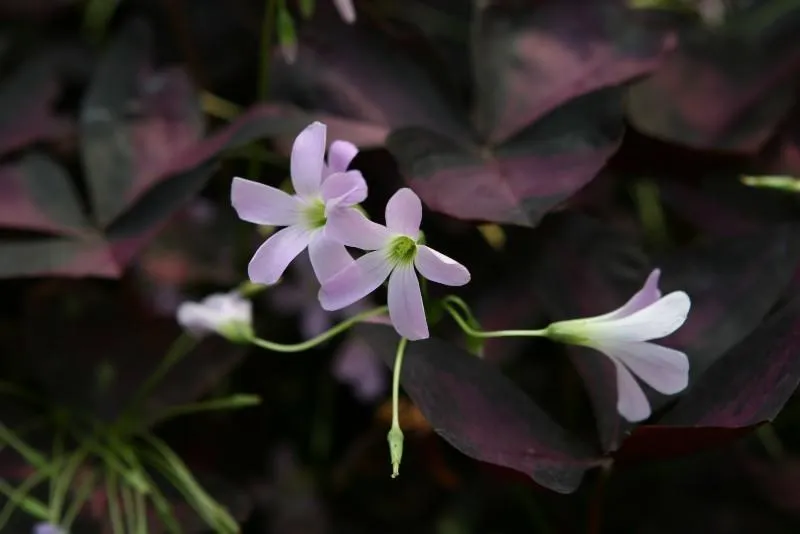
After the purple Shamrock plant propagation from division, we can pour water once to make the tubers closely combine with the soil. In the later stage, we should control the application of water and make appropriate water supplement after the soil turns white and dry. After the split of purple Shamrock plant, we should not expose it to strong light immediately. We need to maintain it in a cool and ventilated place for a period of time, and then give some astigmatism irradiation appropriately. In addition, because the newly prepared soil has sufficient nutrient content, it is not necessary to apply fertilizer immediately after branching, so as to avoid fertilizer damage.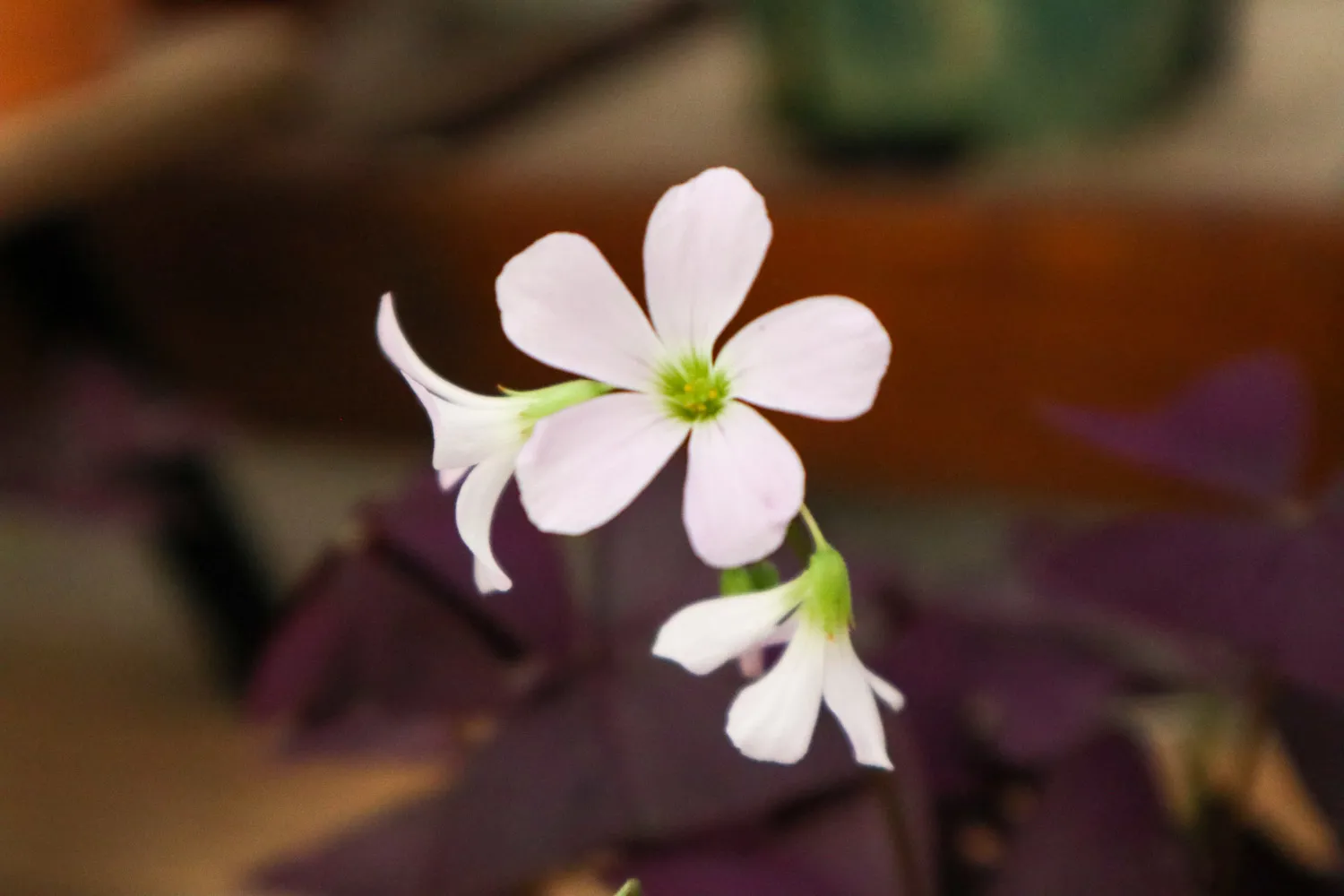
It should be noted that before sowing in purple Shamrock plant, we'd better spray some water on the soil with a water spray bottle, and then sow after wetting it. In this way, we can not water the seeds temporarily after sowing, so as to avoid the small seeds being washed away by water.
After sowing in purple Shamrock plant, we should not immediately put it under strong light for curing to prevent the seeds from being scalded due to the rise of soil temperature. We can first put purple Shamrock plant in a cool and ventilated place for curing for a few days, and then give some astigmatism irradiation appropriately after the seeds germinate. During the management period, do not water a large amount of water frequently, let alone ponding in the soil, so as to avoid the rot of purple Shamrock plant seeds in the excessively wet soil environment for a long time. In addition, do a good job in temperature management, and try to control the temperature at about 18 ℃, so as to speed up the germination time of seeds.
Purple Shamrock Plant Quick InfoWhen to Plant Purple Shamrock PlantWhen does Purple Shamrock Plant Bloom & HarvestPurple Shamrock Plant Care in DetailPurple Shamrock Plant WateringPurple Shamrock Plant SoilPurple Shamrock Plant LightPurple Shamrock Plant TemperaturePurple Shamrock Plant HumidityPurple Shamrock Plant FertilizerPurple Shamrock Plant PruningPurple Shamrock Plant RepottingPurple Shamrock Plant Pest & Disease ControlPurple Shamrock Plant PropagationPurple Shamrock Plant Propagation from DivisionPurple Shamrock Plant Propagation from SeedPurple Shamrock Plant BenefitsEdible functionPurified airAgricultural functionMedicinal effect
Purple Shamrock Plant Quick Info
| Botanical/Scientific Name | Oxalis Violacea |
| Common Name | Purple shamrock, false shamrock, love plant, shamrock, wood sorrel, oxalis, black oxalis |
| When to Grow/Bloom/Harvest | Plant in the spring/Bloom from fall to spring |
| Uses | Embellish desserts |
| Origin | Brazil |
| Light Care | Full and partial sun |
| Soil Care | Rich, well-drained potting mix |
| Temperature Care | 60°F to 75°F |
| Humidity Care | A moderate humidity level |
| Watering | Water lightly just once every couple of weeks |
| Pruning Care | Pruning oxalis triangularis |
| Fertilizer Care | Fertilize every two to three weeks |
| Propagation | Seed or division |
| Toxic | Quite toxic |
| Flower Color | White, pink, lavender |
When to Plant Purple Shamrock Plant

When does Purple Shamrock Plant Bloom & Harvest
The flowering period of purple Shamrock plant is from April to November. Because the flowers and leaves are sensitive to light, they all open on sunny days. In case of cloudy and rainy days, the florets only contain flower buds but will not open; Purple Shamrock plant has a habit of sleeping. At night, the leaves will automatically aggregate and sag after being folded, and then stretch and open again the next morning.Purple Shamrock Plant Care in Detail
Purple Shamrock Plant Watering
During the growth of purple Shamrock plant, the water required is very large, so it needs to be watered in time, so we can water the purple shamrock plant once a day. However, when the plant is dormant, we must pay attention to water control, do not over water it, the watering frequency should be gradually reduced, and the water should be stopped for a short time if necessary. Moreover, when watering, pay attention to pouring water into the soil, so as to ensure that the roots absorb water.Purple Shamrock Plant Soil
The soil planted by purple Shamrock plant should be soft, breathable, with strong drainage capacity and certain fertility. Only in this soil environment can plants grow better and more vigorously. When preparing purple Shamrock plant soil, we can mix perlite, vermiculite and peat soil. Peat soil can improve nutrients, retain water and fertilizer. Vermiculite can improve drainage capacity. We can also mix garden soil, rotten leaf soil, river sand and an appropriate amount of base fertilizer to meet the growth needs. Note that the soil prepared by yourself can only be used after disinfection.
Purple Shamrock Plant Light
Purple Shamrock plant is not afraid of sun exposure. It likes light very much. Photosynthesis can be better carried out under the environment of sufficient light, so as to accumulate more nutrients. The leaf color of purple Shamrock plant will look brighter and bloom better. During the maintenance period, we can put the plants in a well lit environment and give full sunshine.Purple Shamrock Plant Temperature
The suitable temperature for the growth of purple Shamrock plant is 15 ~ 30 ° C. when the temperature exceeds 36 ° C in summer, the leaves are easy to curl and wither. Therefore, in hot summer, we should regularly spray water on the leaves of purple Shamrock plant. If the room temperature is lower than 5 ° C in winter, its leaves are vulnerable to freezing damage.Purple Shamrock Plant Humidity
Purple Shamrock plant likes a warm and humid environment all year round and has a slight drought resistance. However, it should pay attention to watering regularly when raising in the flower pot. We can keep the soil slightly wet in spring and summer. However, we should consider the location of the purple Shamrock plant. If it is raised in a place with more light, the soil should be kept slightly wet. In a place with indoor shade, it can be supplemented with water after the soil is completely dry.Purple Shamrock Plant Fertilizer
Purple Shamrock plant consumes a lot of nutrients during its growth. It should be fertilized and supplemented in time to grow vigorously only when the nutrients are sufficient. The fertilizer applied can be determined according to the growth stage. At the beginning of the basin, an appropriate amount of base fertilizer should be added to make the soil more fertile. Apply nitrogen, phosphorus and potassium compound fertilizer in peak growth season, and pay attention to controlling the fertilizer concentration. It is recommended to dilute it with clean water before watering it on the soil surface, so that the purple Shamrock plant can absorb it faster. If the concentration is high, it will bring fertilizer damage and burn the plant easily.Purple Shamrock Plant Pruning
We should trim purple Shamrock plant in time during the management period, and remove the dense leaves in time when the growth is too strong, so as to improve the ventilation and air permeability, promote better light transmission and promote growth. At ordinary times, if we find that the purple Shamrock plant is yellowing, the dry leaves should be cut off in time, which can not only reduce nutrient consumption, but also avoid infection with diseases and pests. In addition, if the plant type is not beautiful, it can also be re cut. It has strong germination ability and can grow new leaves soon after proper management.
Purple Shamrock Plant Repotting
When the fifth true leaf grows from the bud of purple Shamrock plant, we can change the pot. It should be noted that the pot change time of purple Shamrock plant should not be too early or too late. If the pot change is too early, the buds and seedlings are fragile, it is difficult to slow down the seedling stage, and transplanting too late is easy to cause serious damage to the root system. When changing pots, purple Shamrock plant needs to retain the old soil on its roots, plant according to the density of two plants in each pot, give some astigmatism irradiation after planting, ensure that the soil is wet, and strengthen ventilation management, so as to promote the growth of purple Shamrock plant.Purple Shamrock Plant Pest & Disease Control
- Leaf spot
- Root rot
- Botrytis Cinerea
Purple Shamrock Plant Propagation
Purple Shamrock Plant Propagation from Division
We can choose to divide in spring and autumn to avoid hot summer and cold winter, so that the bulb can have a suitable growth temperature and promote its growth. We should select the mother plant with vigorous growth, strong activity and no damage by diseases and pests, and the growth time is more than two years, because the small bulb isolated from this mother plant has strong growth ability, which can greatly improve the success rate of ramet. We can use a seedling pot of moderate size, or a common plastic pot in life. This kind of flowerpot is not only cheap, but also manually increase the number of drainage holes to ensure that the flowerpot has good air permeability and drainage.After the purple Shamrock plant propagation from division, we can pour water once to make the tubers closely combine with the soil. In the later stage, we should control the application of water and make appropriate water supplement after the soil turns white and dry. After the split of purple Shamrock plant, we should not expose it to strong light immediately. We need to maintain it in a cool and ventilated place for a period of time, and then give some astigmatism irradiation appropriately. In addition, because the newly prepared soil has sufficient nutrient content, it is not necessary to apply fertilizer immediately after branching, so as to avoid fertilizer damage.

Purple Shamrock Plant Propagation from Seed
The seeds of purple Shamrock plant are too small. We can't grasp these seeds directly by hand when sowing. We need to fully mix the seeds with a small amount of soil and then sprinkle them evenly in the seedling soil. This can not only avoid the overlapping of seeds, but also avoid the disorderly growth of buds and seedlings. After the seeds of purple Shamrock plant are sown, we can gently press them with our hands, and then cover the flowerpot with a layer of plastic preservative film to keep warm and moisturize. We can see the germination of purple shamrock plant seeds in about 10 days.It should be noted that before sowing in purple Shamrock plant, we'd better spray some water on the soil with a water spray bottle, and then sow after wetting it. In this way, we can not water the seeds temporarily after sowing, so as to avoid the small seeds being washed away by water.
After sowing in purple Shamrock plant, we should not immediately put it under strong light for curing to prevent the seeds from being scalded due to the rise of soil temperature. We can first put purple Shamrock plant in a cool and ventilated place for curing for a few days, and then give some astigmatism irradiation appropriately after the seeds germinate. During the management period, do not water a large amount of water frequently, let alone ponding in the soil, so as to avoid the rot of purple Shamrock plant seeds in the excessively wet soil environment for a long time. In addition, do a good job in temperature management, and try to control the temperature at about 18 ℃, so as to speed up the germination time of seeds.
Purple Shamrock Plant Benefits
Edible function
The leaves of purple Shamrock plant can be drunk in water after washing. The taste is slightly sour. It is not only delicious, but also has unique curative effect. Oh, purple Shamrock plant can relieve fever and has great curative effect on blood regulation. The plant is often called a healthy food flower.Purified air
Purple Shamrock plant has a good effect on purifying air. It is a non-toxic plant. It can not only improve air quality, but also absorb pollutants in the air. But we should not put the purple Shamrock plant indoors for a long time. At least we should put it in a place with sunshine.Agricultural function
Purple Shamrock plant is often widely planted on the plains of North America, Western Europe and other places. Because it can conserve water and soil, it is an important green fertilizer. Therefore, large areas of purple Shamrock plant are often seen in rainy and vast plain areas, which have played a great role in agricultural water and soil conservation.Medicinal effect
The medicinal value of purple Shamrock plant is significant. We can use the whole herb of purple Shamrock plant as medicine, which can clear away heat, detoxify, detumescence and disperse diseases. It is also effective in the treatment of trauma caused by insects and snakes.Latest Updated
- Benefits of Bugleweed - 7 Science-backed Health Benefits
- Bugleweed Dangers & Side Effects - Is It Poisonous?
- How to Plant Evergreen Trees - What You Should Know
- When to Plant Evergreens - Grow Guide for Evergreen Trees
- 12 Wonderful Evergreen Shrubs for Your Garden
- 12 Popular Evergreen Plants with Pictures for Beginners
- When And How To Prune A Lilac Bush Like a Pro
- How to Grow & Care for Lilac Vine (Hardenbergia Violacea)
- Japanese Lilac Tree (Syringa Reticulata) Care & Propagation Guide
- Shumard Oak Pros and Cons - What to Know
Popular Articles
- Winter maintenance of Antirrhinum Majus
- How to Grow Terminalia Mantaly Tree
- How to Grow and Care for Crossostephium Chinense
- How to grow Antirrhinum Majus in spring
- Peristeria Elata (Dove Orchid) Profile: Info & Care Guide
- Underwatered Snake Plant (Sansevieria Trifasciata) - Signs And How To Fix
- How to Care for Brazilian Jasmine Plant (Mandevilla Sanderi)
- How to Grow & Care for Graptopetalum Purple Delight in Summer
- Rosa Chinensis (China Rose): Plant Growing & Care Tips
- How to Care for Baby Sun Rose (Aptenia Cordifolia)